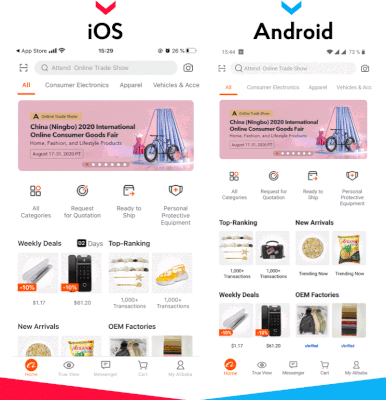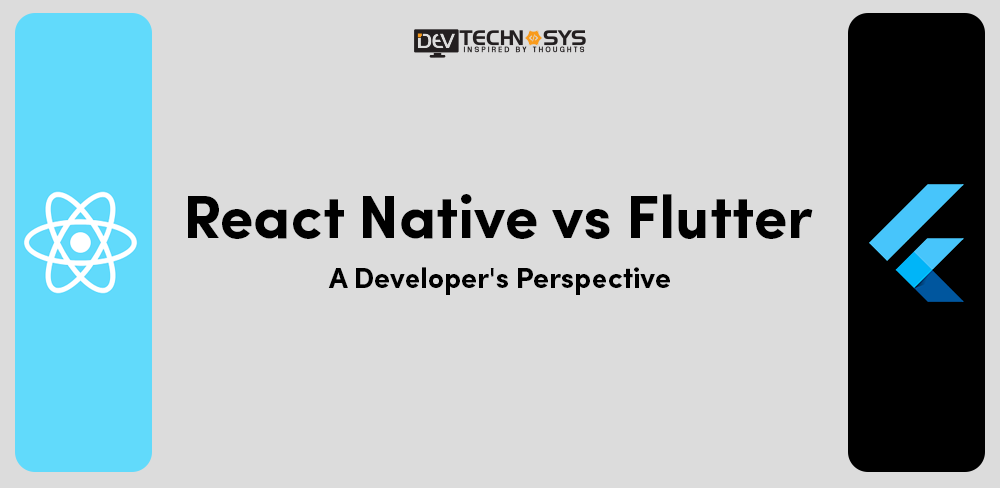Cross-platform app development is gaining popularity in today’s time. React Native & Flutter – two popular programming languages are ruling in 2022. Choosing the right framework for mobile app development depends on multiple sets of features and functionalities, as mentioned by the mobile app development company professionals in this blog.
React Native Vs Flutter – Which one to choose? This is one of the most popular debates that has been going around for a while. So, if you also want to develop an app and wondering, which one to choose for mobile app development, continue reading.
What Is React Native?
During the F8 conference of 2015, one of the most well-known frameworks of React was launched, and now it is known as React Native. It is one of the most well-known JavaScript libraries primarily concerned with front-end development. Being a subset of React, React Native allows native app development.
Just like react itself, the React Native framework is also maintained by Meta, formerly Facebook. Needless to say, React Native app development services are popular among clients. This is a relevant point in React Native vs Flutter debate.
Where Is React Native Used?
Like we read, React Native is a framework empowered by the JavaScript library. It is used for cross-platform app development that promises native-like app performance. It includes Android, iOS, macOS, Web, Desktop, etc.
Popular Apps Developed in React Native are –
- Facebook Ads
- Skype
- Tesla
What Are the Advantages of React Native?
There are various advantages of using React Native development. These are, as mentioned below:
- Strong community support
- Amazing application performance
- Readily available pre-development components
- Highly reusable programming code
- Cost-effective mobile app development solutions
- Great third-party plug-in support
- High stability and reliability
These major advantages make React Native the most demanded language for mobile app development in today’s time.
What Are the Disadvantages of React Native?
Like the advantages, every language has its own set of disadvantages. Those drawbacks act as a barrier during development. Let’s see what those are –
- Difficult to learn
- Hard to debug
- Unstructured framework
- Requires higher expertise
- Dependence on Facebook
So, the points mentioned above cannot be termed as proper disadvantages. They are just the cons due to which businesses can face slight difficulties when they build a mobile app. Now that you have an idea of React Native let’s move to the next framework, i.e. Flutter.
What Is Flutter?
Flutter, by definition, is a UI toolkit that is portable and open-sourced. It is mainly used for designing and developing natively compiled applications. Flutter is compatible with different platforms, including mobile, web, and even desktop. The best part about Flutter is that the same code can be implemented across multiple platforms.
Flutter is a toolkit that was first introduced to the developers back in 2018, making it young in the development world. It was developed by none other than the tech giant Google itself. It is popular among developers. It is a key reason a full-stack development company prefers Flutter for app development.

Where Is Flutter Used?
Flutter is a toolkit that enables code reusability across different platforms and operating systems. This includes mobile phones for different development platforms like iOS, Android, and cross-platform app development. In addition to this, Flutter also allows these apps to connect with the concerned platform service.
Popular Apps Developed in Flutter are –
- Xianyu app by Alibaba
- Hamilton app for Hamilton Musical
- Google Ads app
- Philips Hue
- My BMW
What Are the Advantages Of Flutter?
Like React Native, Flutter also has its own set of advantages. Some of the major perks of using Flutter are highlighted below:
- Same UI applicable across different platforms
- Reduced development time
- Provide Native-like performance
- Own rendering engine
- Custom & animated UI
- Functioning beyond mobile
- Rich libraries
These are some of the major advantages of using Flutter for mobile and custom web development. Now, let’s take a look into some of its disadvantages.
What Are the Disadvantages of Flutter?
As good as a toolkit flutter advantages, there are several disadvantages related to it. Some of them are mentioned below:
- Weak support for the iOS platform
- Limited Tools
- Heavy files
- No Third-party libraries
- Problem with iOS compatibility
React Native Vs Flutter: Which One to Choose?

When one talks about native app development technologies like React Native and Flutter, there are several parameters that have to be discussed. This includes the architecture, programming language, tools, community support, and other things. So, here we have discussed some significant parameters for React Native vs Flutter. With this being said, let’s get right into it:
1. Programming Language
It goes without saying that the programming language being used in a toolkit or framework has a high influence on its working and performance of the same. For that reason, the programming language used in React Native and flutter is mentioned below:
React Native is an open-source framework based on the programming language JavaScript. It allows developers to create an amazing user interface. Now, a React Native developer also benefits from JavaScript’s agility and wide application. This is the major reason to consider hiring a React Native app development company.
Flutter uses a rather odd programming language known as Dart. Much like Flutter itself, Dart is also developed by Google itself. Since it is a client-optimized language, there are many advantages to it.
Read More : Everything You Need To Know About Mobile App Development Process
2. Architecture
Architecture is an important part of the development process in many ways. So, here is a difference of architecture between React Native and Flutter.
React Native’s architecture is rather well-designed. It establishes a sound communication channel between the JavaScript programming language and the native language of the concerned platform. This is done via JavaScript Bridge.
Here, JSON messages enable the two-sided communication between JS and native. This communication is asynchronous. There are several advantages related to it, but the one that stands out is that there is no lag in UI.
Flutter doesn’t communicate using a bridge since it has everything in itself. In this way, it is completely different from react-native.
3. Development Tools
Development tools have many benefits when it comes to the whole process. The reason is that these tools simplify many processes and streamline development. So, the more development tools technology has, the better it is.
React native was introduced in 2015. While there are a considerable amount of development tools available in the market, the number is less when compared to older technologies.
Flutter isn’t older than react-native but only younger; for that reason, the development tool availability is even less in this toolkit.
4. User Interface

Both of these technologies are highly concerned with a user interface. Now, let’s see how these entities perform in this parameter.
React Native performs well in User Interface. The reason is that JavaScript enables the rendering of native components into the one that concerns us. The ability to do so allows developers to create React-native apps with look and feel like native platforms. In addition to this, there are a lot of readymade parts available in the market.
Again, Flutter doesn’t use the bridge technology as UI widgets built into itself. It makes it easier for the Flutter developers to deliver native-like apps.
Read More: Why Google Flutter Is Perfect For Cross-Platform Mobile App Development
5. Community
The larger the community, the better support a development technology has. This is why having a good community is important for a framework, libraries, and programming languages.
In the case of React Native vs Flutter, the former one is the older of the two. While there isn’t much difference in their launch, the community support for React Native is slightly better than that of Flutter.
Like one can already see, Flutter is recent. And when you talk about community, it takes time to develop and mature, much like development technology itself.
6. Time-to-Market
Time-to-market refers to the development time taken from the beginning of the project to when it is delivered to the client or deployed in the market. It is one of the most concerning factors from the client-side, as time translates into money.
React Native offers good time-to-market, as fast as flutter development. It is one of the reasons why android app development services are based on the React Native framework.
Flutter is good when it comes to time-to-market, just like its counterpart. In fact, Flutter development time is faster than native app development.
Conclusion!
As discussed, both React Native & Flutter have their own advantages and disadvantages. It goes without saying that the debate of React Native vs Flutter can go on forever. However, it is often seen that react native app development services have the upper hand on Flutter for various reasons. Nevertheless, suppose you want to develop an app of your own. In that case, it is recommended that you consult a mobile app development company in Dubai or UAE, as they can guide you better based on your needs and project requirements.













